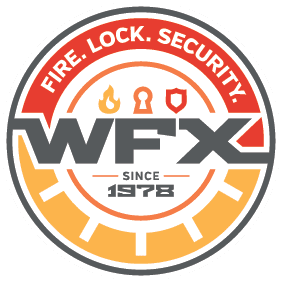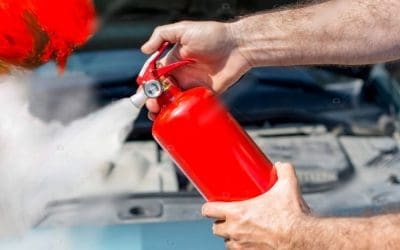When deciding how to best protect your home or business, there are many options that come to mind. Adding locks to vulnerable entryways can help to ward off intruders. A fence can help present a visual and physical deterrent to would-be criminals looking to impede your property lines. Some people even feel safest when they’ve procured more announced measures such as a guard dog or warning signs.
The camera, however, is one of the most vital components for any home or business protection strategy, especially when the property itself isn’t occupied by its tenants. But picking out a great camera system isn’t exactly easy. After all, cameras systems come in a wide array of price ranges with varying feature sets like high-definition video, wireless transmission, and offsite storage capabilities.
There’s also the potential for confusion about whether a security camera is different than a surveillance camera.
Is there a difference between a security camera and a surveillance camera?
What Is a Security Camera?
A security camera is a camera that’s part of a closed-loop system, meaning the video feed doesn’t usually leave the premises. Instead, security cameras are routed to a central point within the property to a monitoring station. These are also sometimes referred to as CCTV or closed-circuit television cameras. Several years ago, these systems were typically run into a VCR system and would record low definition video to tapes. Once a tape had filled up, some systems had the ability to record back over the previous footage while others required the VHS tape to be manually swapped out in order to continue to record.
Today, these security camera systems are usually routed into a DVR or digital video recorder. The video quality that’s produced from these camera systems has also grown in clarity and resolution, with some systems capable of 1080p or even 4K video capture. This simply means that newer cameras can capture higher-quality video with sharper details than their predecessors.
Additionally, many security camera systems can be previewed online from a computer or smartphone.
What Is a Surveillance Camera?
A surveillance camera is a camera that has its video feed transmitted to a remote destination specifically with the intent of closely monitoring a place or subject. Sometimes, these cameras are also referred to as IP or internet protocol cameras. An IP camera simply means that the camera transmits its video feed through the internet in order to get to its destination.
Is There A Difference Between a Security Camera and a Surveillance Camera?
Not really. While there’s a technical difference with the transmission method, those lines have been completely blurred due to the advancement of modern technology. Where older analog camera systems required wireless, it’s now possible to get a wireless camera system that’s still in a closed-loop. Likewise, standard analog cameras can now have their video feed captured digitally through DVRs that grant the ability to perform remote surveillance and monitoring.
Digital cameras, regardless of the security or surveillance moniker, will typically use an NVR or network video recorder for video storage. While they’re both essentially doing the same thing, DVRs convert the analog signal into digital while NVRs take camera-processed digital footage in via an IP connection.
The real difference in the security camera vs surveillance camera debate boils down to intent. The definition of surveillance simply means to watch closely. So, with that in mind, any camera can be a surveillance camera.
Ultimately, most modern camera systems serve the same purpose — protecting your property and warding off trouble.
What’s the Best Security Camera System for Me?
The best security camera system is the one that works as intended and satisfies all of your needs. A quality analog system could be just as good as an expensive IP system so long as the analog system serves its purpose. This is why working with qualified security sales experts can help to navigate those intricacies and find the perfect solution for you.
There are many different packages that can be built and will require information about the surrounding utilities such as power and internet along with security goals. Locations with higher crime rates or higher valued assets will require vastly different systems than a small convenience store or a private home.
For example, a rural cottage may not need internet connectivity at first glance. However, if the owner wants to be able to monitor the property remotely, an internet-connected system would be required.
Another important consideration is whether the location has a current system in place. In the case of a new installation, it could be wise to take the time to cover all of your bases and choose a more modern system. With a preexisting system, it could require a complete overhaul or be as simple as adding a few new cameras and a DVR to reduce the total cost and hassle of installation.
In the end, there’s no ‘one-size-fits-all’ solution and your needs will dictate the best system for you and your property. Our team is standing by to provide expert knowledge and an unbeatable customer service experience.
Don’t leave yourself vulnerable! Give us a call today or request a free consultation — we’ll help you choose the best security cameras so that you’re always protected!

What Is Food Truck Fire Suppression?
The fire suppression systems you’ll find in food trucks will often mirror what a standard restaurant uses, simply engineered and tailored to fit comfortably within the box of a food truck. The task of keeping up with these mobile food stops has been an uphill race for local and state governments to get up to speed and establish guidelines for these businesses.
Aside from food handling and cleanliness regulations, nearly every local and state government has requirements surrounding safety features. If you’ve started a food truck, you know that one of the first safety measures installed is an exhaust system. These exhaust hoods help remove the smoke, vapors and airborne particles that appear during the workday. While necessary, they are not a replacement for a true food truck fire suppression system.

ood truck fire suppression systems when installed in your food truck are used to extinguish and contain fires when and if they happen. Fire suppressant chemicals are sprayed throughout the interior of the truck while the system also shuts off any electrical power coming to the area to avoid further combustion and damage. These systems not only help to protect the food truck, but also you, your employees and your valued customers from experiencing any harm while participating in your business.
Choosing to equip your truck with a new fire suppression system is an investment in both safety and your brand as making employees and customers feel safe when visiting your weekly spot is important to repeat customers that look forward to seeing you regularly. On top of fire suppression, we recommend you maintain a Class K fire extinguisher within arm’s reach in the kitchen. A fast response with an extinguisher can handle a small fire before the entire suppression system goes off, saving you some time and cleanup while also increasing the service life of your system.
Always Check Local Laws
While food truck popularity has skyrocketed, local and state governments have steadily caught up and nearly all of them require food truck fire suppression systems be installed before opening up shop. Failure to do so can result in fines or loss of licensure. It’s vital to check your state and city’s laws before setting out on your food truck journey.
We’ve found that a majority of these laws can be found directly online, saving you time from visiting a local office or getting through to someone on the phone. The details you obtain will also outline the specific details of the required fire suppression system, letting you focus on getting one that works with your budget while also meeting all regulations.
The National Fire Protection Association also has model codes on fire safety within businesses, which added new requirements in 2017-18. Based around fire safety, these requirements include items such as wheel chocks to keep you stationary while cooking, ensuring fryer lids are available to cover vats while in transit and the regular testing and maintenance of portable fire extinguishers.
It’s All About Safety
We understand the stress surrounding starting your own business and maintaining a mobile work location. It’s important to remember that food truck fire suppression is not meant to be a burden, but a life-saving measure in more ways than one. Many modern suppression systems can also be equipped with gas sensors for food trucks that use liquid petroleum for heating, tackling two different requirements at once.
Don’t let the idea of figuring out how to equip your food truck hold you back from living you dream.
At WFX, we’re here to help make sure you’re checking everything off the list. Whether you’re in MD, PA, or surrounding areas – take a moment to reach out to us online today for a consultation.




